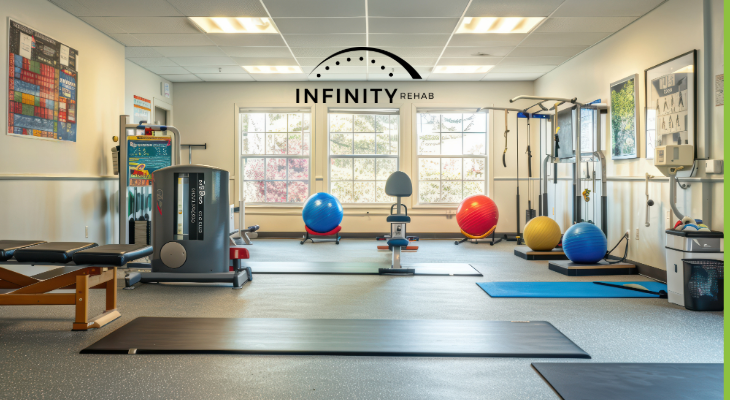Healthcare has seen a recent jump in interest around the subject of evidence-based practice, or EBP. Necessity is the driving force behind this trend. The US spends over twice as much as the average developed nation on health care, yet Americans don’t live any longer than our sister nations1. Now the people paying the bills – largely our government and private insurers – are starting to ask more questions and demand a better return on investment.
The good news is that no one knows health care better than the people who practice it. Clinicians have the training and experience to compare research into best practices against the real-life problem in front of us to make decisions that can immediately improve patient outcomes, often at a lower cost.
To frame our approach into evidence-based practice, we will use a great road map presented by the American Speech-Language-Hearing Association (ASHA). ASHA outlines four key steps in the evidence-based practice process for clinicians. Let’s look at how each stage is important to the process, and how following the steps can lead to a clinical decision based on evidence.
Step 1: Framing the Clinical Question
Before you jump into any research to find the answers, you first need to know your question. The more clearly you can define your question, the more confident you can be that your efforts will turn up evidence that addresses your clinical scenario. The PICO approach is a widely-used format to creating a strong clinical question.
Let’s say you’re a physical therapist evaluating a 72-year-old patient who recently underwent a total knee replacement. You want to develop a well-rounded plan that helps her return to maximal function in her community in the shortest time possible. The patient’s son asks you if he should rent a continuous passive motion (CPM) machine to aid his mother’s recovery. What might the PICO approach yield for a relevant clinical question?
Problem: 72 y/o female status-post TKA with limited functional mobility
Intervention: Continuous passive motion (CPM)
Comparison: No continuous passive intervention
Outcome: Improved functional ambulation
Step 2: Finding the Evidence
The next step involves diving into the research to find the evidence that is relevant to your question. You are looking for one of two types of evidence: 1) systematic reviews, or 2) individual studies.
For hands-on practitioners who spend more time with patients than journals, systematic reviews are your best friend in the world of EBP. Systematic reviews offer a thorough look into the full body of scientific evidence related to a specific clinical question. A systematic review often describes interventions proven to be effective or ineffective without endorsing any particular intervention.
In the absence of a systematic review, individual studies can be helpful, but drawing conclusions from any single study is an art in itself. We will use a systematic review to look at our patient case.
Two popular sources for finding systematic reviews are 1) the Cochrane Collaboration (https://www.cochrane.org/about-us/evidence-based-health-care) and 2) the Campbell Collaboration (https://www.campbellcollaboration.org/lib/).
A review of the Cochrane Collaboration for our current scenario reveals over 3,000 search results for “total knee replacement continuous passive motion,” with a great systematic review of 24 relevant studies second from the top of our search.
Step 3: Assessing the Evidence
Now that you’ve got your evidence, you need to assess how well it addressed your question. You first need to consider how well the factors of the systematic review match your particular case. For example in our case, a systematic review that includes many surgically-complicated cases may not be highly applicable to your patient whose surgery was relatively straightforward.
The other main consideration of systematic reviews is to look at who conducted the review. The eyes looking at the information can sometimes see conclusions that favor their perspective. For example, a medical manufacturer of CPM machines may interpret the evidence differently than an independent academic institution. Considering these important details helps you frame your assessment as you prepare to make a decision.
Step 4: Making the Clinical Decision
The final step is to make your decision. You must combine the relevant evidence you’ve found, your professional knowledge, and your patient’s circumstances to make a decision. This is where challenge and opportunity overlap. So what does the evidence say is the best decision for this total knee replacement patient? That’s up to you to decide.
Evidence-based practice has long been a guiding ideal for us at Infinity. For a company run by therapists, this is a perfect fit for our culture and for our future. We aim to use assessments and interventions that have been proven effective for our patients. The fastest way to reach our overarching goal of regularly providing evidence-based rehab is to have more eyes – your eyes – looking at the evidence to make well-informed treatment decisions for every person you serve.
References:
OECD Health Data: 2013 How Does the United States Compare. (2013, January 1). . Retrieved June 1, 2014, from https://www.oecd.org/unitedstates/Briefing-Note-USA-2013.pdf
Evidence-Based Practice (EBP). (n.d.). Evidence-Based Practice (EBP). Retrieved June 1, 2014, from https://www.asha.org/members/ebp/
Evidence-Based Practice (n.d.). University of Washington Health Sciences Library. Retrieved June 1. 2014 from https://libguides.hsl.washington.edu/content.php?pid=231619&sid=1931590
Harvey, L., Brosseau, L., & Herbert, R. (n.d.). Continuous passive motion after knee replacement surgery. Welcome. Retrieved June 1, 2014, from https://summaries.cochrane.org/CD004260/continuous-passive-motion-after-knee-replacement-surgery
______________________________________________________________________
Derek Fenwick, PT, MBA, GCS is a physical therapist and board-certified geriatric clinical specialist. He develops leaders in healthcare as the Director of Professional Development at Infinity Rehab. Find him on LinkedIn and on Twitter @DerekFenwickPT.






